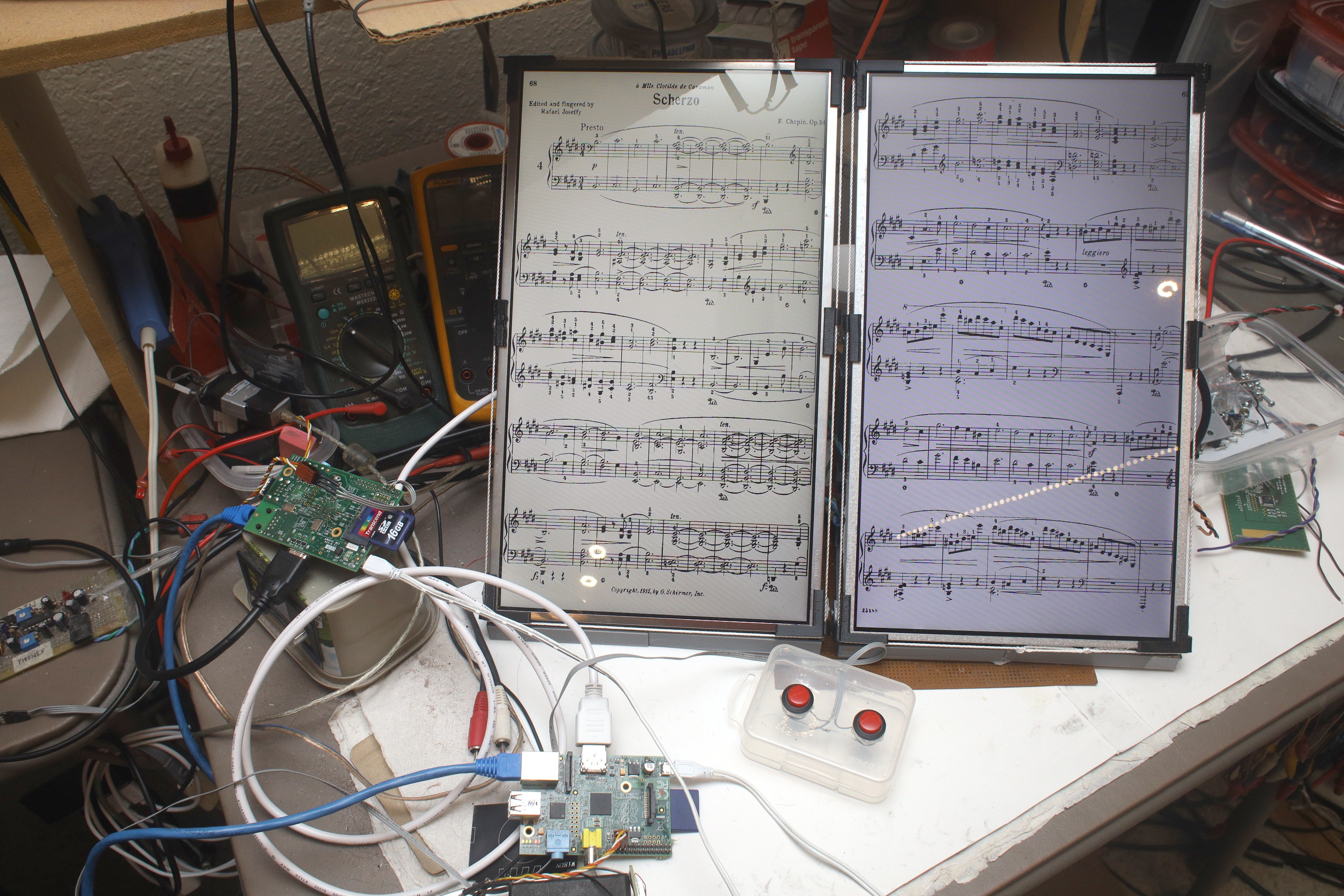The goal was to plug the monitors into the existing 4B which is used for sound processing. Things were going well with the raspberry pi 1B on a single monitor, but the 4B does not support 1366x768. The problem is it's a very uncommon mode in modern times so it was phased out in order to support dual HDMI.
They offered an explanation of the compromise:
https://www.raspberrypi.org/documentation/configuration/config-txt/pi4-hdmi.md
They do mention supporting a close 1360x768 resolution.
There's no way to disable scaling on the Novatek NT68676, so 1360x768 always has aliasing which makes it worthless for showing text. No scaled mode would allow individually addressing RGB triplets.
It would have been a bad day for anyone who just spent $200 on portable monitors of 1366x768 resolution.
There is a way to change the language which isn't documented anywhere. That allowed lions to search for a non existent way to disable scaling.
That leaves daisychaining the last 2 raspberry pi 1B's. There were once 3, but lions unwisely stripped the HDMI header from 1 to minimize its footprint. Many thoughts go through a lion's mind about the affordability of getting 2 new 1920x1080 monitors vs wrangling multiple raspberry pi's.
Relying on the sound processor to drive 2 displays & have enough clockcycles for sound processing always was a risky move.
Xorg can be run in 8 bit mode to get the fastest page turns. This requires adding another line to /boot/config.txt
framebuffer_depth=8
8 bit mode caused aliasing in the X direction, yet another unsupported mode. The best it could do was 16 bit.
framebuffer_depth=16
Page turn speed vs depth:
8 bit: 25fps
16 bit: 25fps
24 bit: 12fps
Faster page turns may be possible by writing to the framebuffer directly, but 25 was good enough.
With a simple network protocol & a bag of network cables, the 2 pages finally showed.

Next comes a power system. The combined panels draw 1.1A at 12V. The PI's draw a few more amps at 5V.
 lion mclionhead
lion mclionhead
Discussions
Become a Hackaday.io Member
Create an account to leave a comment. Already have an account? Log In.